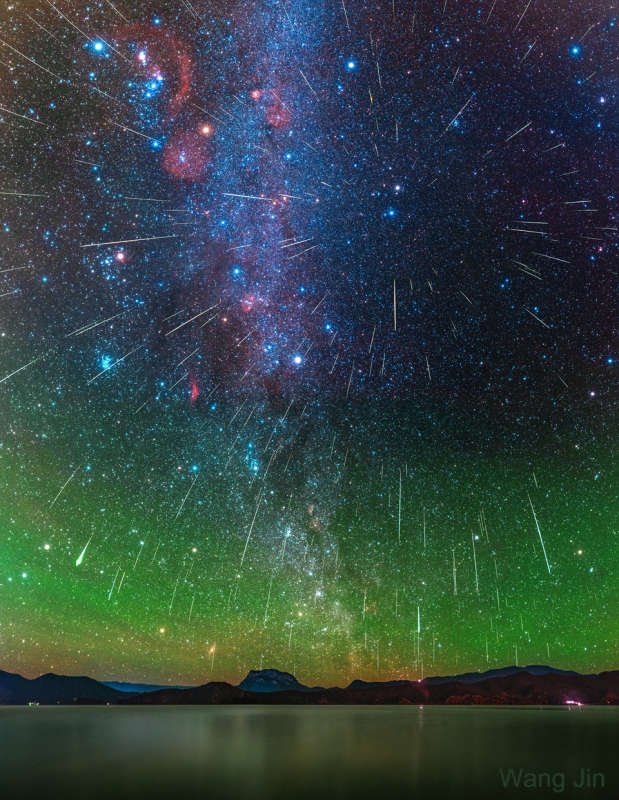
|
Credit & Copyright: Wang Jin
Explanation:
Where are all of these meteors coming from?
In terms of direction on the sky, the pointed answer is the
constellation
of Gemini.
That is why the major meteor shower in December is known as the
Geminids
--
because shower meteors all appear to come from a
radiant toward Gemini.
Three dimensionally, however,
sand-sized debris
expelled from the unusual asteroid
3200 Phaethon
follows a well-defined orbit about our Sun,
and the part of the orbit that approaches Earth
is superposed in front of the
constellation of Gemini.
Therefore, when Earth
crosses this orbit, the
radiant point of
falling debris appears in Gemini.
Featured here, a composite of many images taken during the 2020
Geminids meteor shower shows over 200
bright meteorss that
streaked
through the sky during the night December 14.
The best meteor shower in November, the
Leonids,
peaks tonight and tomorrow.
Unfortunately,
this year,
dim meteors during the
early-morning
peak will be hard
to see against a sky lit by a bright gibbous moon.
Still, a few
bright Leonid
meteors should be visible each hour.
|
January February March April May June July August September October November December |
| ||||||||||||||||||||||||||||||||||||||||||||||||
NASA Web Site Statements, Warnings, and Disclaimers
NASA Official: Jay Norris. Specific rights apply.
A service of: LHEA at NASA / GSFC
& Michigan Tech. U.
Based on Astronomy Picture
Of the Day
Publications with keywords: Geminids - meteor shower
Publications with words: Geminids - meteor shower
See also:
